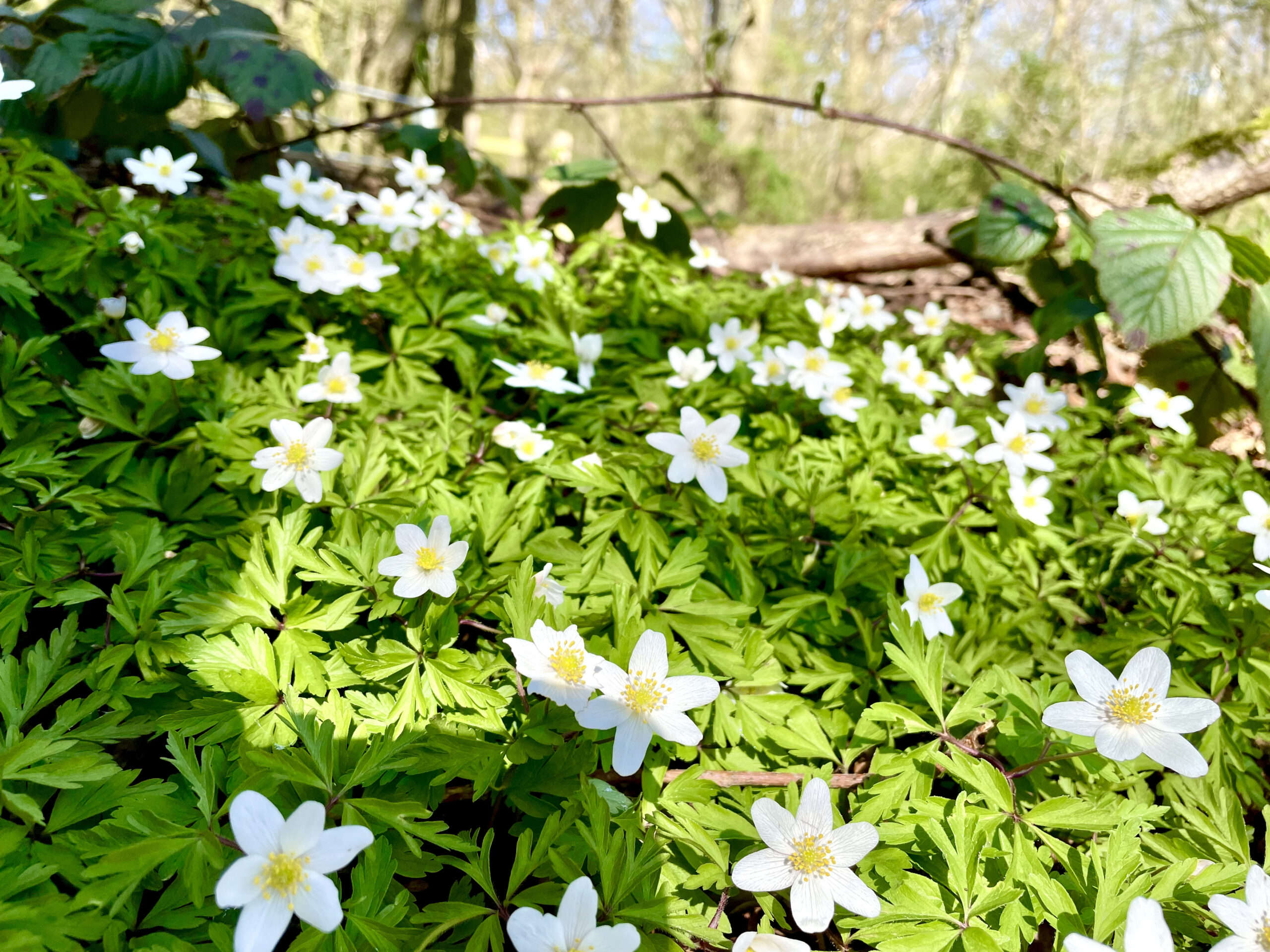Over the last few weeks whilst out and about walking in the countryside – often on the way to meet DofE groups, I have been noticing the spring wild flowers that have been brighting the verges and woodlands.
Wild flowers often have interesting names and stories associated with them, so I have chosen a few Spring wild flowers to write about here with the hope that you might find them as fascinating as I do.
Wood anemone:

Anemone nemorosa is a stunning plant; a member of the buttercup family, Ranunculaceae grow in woodlands where the flowers bloom in spring between March and May before the woodland canopy becomes to dense. Like other members of the buttercup family, the flower is not made up of petals but sepals and the seeds are mostly infertile. The plant spreads slowly through the growth of its roots and by a myrecochory, which is the removal of seeds by ants – the ants are attracted to the seed by a fleshy fat attached called elaiosome, therefore dispersing the seed.

The wood anemone is named after the wind god Anemos, who sent his anemones in spring to herald his arrival. They have a few other names: windflower, wind crowfoot and smell fox. The plant is considered toxic, containing the chemical Protoanemonin, which is a a strong anti microbial and causes paralysation of the nervous system. In the past herbalists would use it to treat headaches and as a rubifacient and also in the treatment of leprosy.
Dog violets:

Viola riviniana is a common wild violet growing in woods, hedgebanks, pastures, mountain rocks and flowers from April to June. Related to other violets and pansies, the ‘dog’ in the name means that it lacks scent, as opposed to sweet violets. ‘Dog’ is a common prefix for distinguishing an percieved inferior species. Although named as inferior, it is very important for several fritillary butterflies, including the Small Pearl-bordered, the Pearl-bordered and the Silver-washed Fritillaries, because they lay their eggs on it. The plant is edible like other violets, and the leaves and flowers can be eaten and cooked – the leaves are a rich source of vitamin A.
Pasqueflower:

Pulsatilla vulgaris is a striking purple flowering plant, another member of the Buttercup family, Ranunculaceae. It grows in undisturbed chalky or limestone soils, flowering at the end of March through to May. It is a rare plant in the UK, restricted to a few nature reserves. As it flowers at or around Easter ,it is known as the anemone of Passiontide and is the reason for its name “Pasque” (meaning “like Paschal”, of Easter). Legend has it that the flowers sprang up in places that had been soaked in the blood of Romans or Danes, because it often appears on old barrows and boundary banks. Like other members of the Ranunculaceae, it is poisonous, but in the past it was a popular medicinal herb and was put to use against a number of different aliments, such as a remedy for warts and even in the treatment of plague in many countries.
Greater Stitchwort:

Stellaria holostea is a member of the carnation family and grows in woodland, roadside verges and grassy banks. It flowers from March to June and has other names, such as Star of Bethlehem, old mans bones and snapdragon. The seed pods are often heard going pop in late spring. The name stitchwort comes from using an infusion of the plant to treat a ‘stitch’ (as in, runners stitch). The plant is edible and the shoots can be made into salads and the flowers eaten, the roots can also be used, to make a dye. In the past it was thought that picking the flowers would bring on a thunder storm, and in the Southwest it was associated with pixies.
Discover more from The Mountain Trod
Subscribe to get the latest posts sent to your email.


